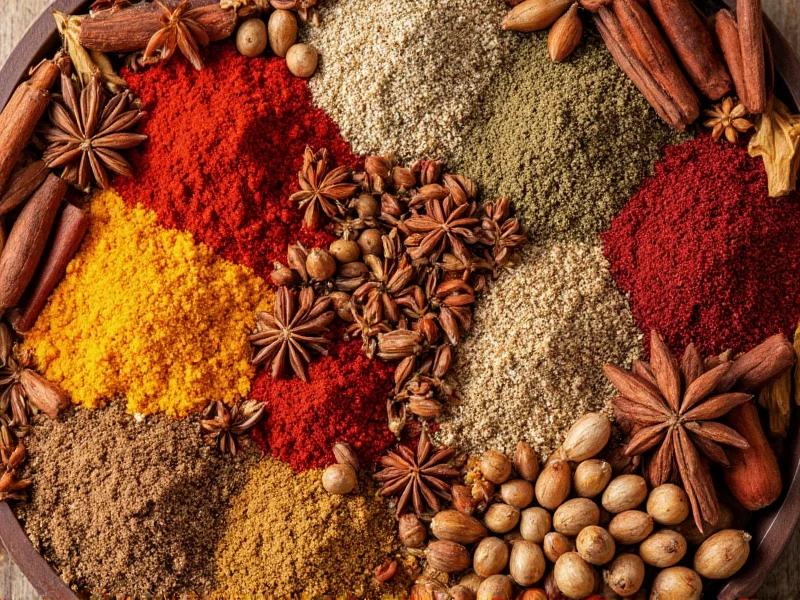Building Your Essential Spice Collection: A Practical Guide
Creating a well-stocked spice collection doesn't require hundreds of jars. The most valuable approach focuses on quality over quantity, starting with versatile spices that work across multiple cuisines. According to culinary research and chef recommendations, a functional starter collection consists of just seven core spices that form the foundation for 90% of home cooking needs.Why These Seven Spices?
These particular spices earned their "must have" status through versatility, shelf stability, and universal application across global cuisines. Unlike specialty spices used for specific dishes, these work equally well in breakfast, lunch, and dinner preparations. Food scientists note that these particular flavor compounds remain stable longer than more delicate herbs, making them practical for home cooks who don't use spices daily.| Spice | Primary Flavor Profile | Top 3 Culinary Uses |
|---|---|---|
| Black Pepper | Pungent, woody, slightly floral | Finishing meat dishes, salad dressings, egg preparations |
| Kosher Salt | Clean salinity, enhances other flavors | General seasoning, brining, baking |
| Garlic Powder | Savory, umami, slightly sweet | Rub blends, vegetable roasting, sauce enhancement |
| Onion Powder | Sweet, earthy, aromatic | Marinades, soups, seasoning blends |
| Paprika | Earthy, sweet to smoky | Coloring dishes, spice rubs, egg dishes |
| Cumin | Earthy, warm, slightly citrusy | Mexican cuisine, curry blends, roasted vegetables |
| Cinnamon | Sweet, woody, warm | Baking, spice blends, savory Middle Eastern dishes |
Essential Spices for Home Cooking: Beyond the Basics
While the core seven spices cover most cooking needs, expanding your collection with these additional spices creates more culinary possibilities without overwhelming your pantry:- Red pepper flakes - Adds controlled heat to pasta dishes, pizza, and sauces
- Dried oregano - Essential for Mediterranean and Italian cooking
- Turmeric - Provides color and earthy flavor to curries and rice dishes
Proper Spice Storage Techniques
Many home cooks unknowingly compromise their essential spices through improper storage. Research from food science laboratories indicates that light, heat, and moisture are the three primary factors that degrade spice quality. For optimal shelf life of your must-have kitchen spices:- Store in airtight containers away from stove heat
- Keep in dark cabinets rather than open racks
- Avoid storing above 70°F (21°C) for maximum flavor retention
- Label containers with purchase dates (most ground spices last 1-2 years)
Using Your Spice Collection Effectively
Understanding when and how to use your essential spices makes the difference between adequate and exceptional cooking. Professional chefs recommend these evidence-based techniques for home cooks building their basic spice collection:- Bloom spices in oil - Heating spices in fat releases flavor compounds more effectively than adding them directly to dry ingredients
- Add at proper stages - Robust spices like cumin benefit from early addition, while delicate flavors work better as finishing touches
- Toast whole spices - Briefly heating whole spices before grinding enhances their aromatic compounds
- Measure carefully - Start with 1/4 teaspoon per serving and adjust to taste
Common Spice Collection Mistakes to Avoid
Even experienced home cooks make these frequent errors with their essential spices:- Using spices past their prime (most lose potency after 2 years)
- Storing spices near heat sources like ovens or stovetops
- Not adjusting quantities when substituting fresh for dried herbs
- Overlooking the importance of salt quality in spice blends
Building Your Personalized Spice Collection
Your ideal must-have spices list should evolve based on your cooking habits. If you frequently prepare Mexican cuisine, prioritize cumin and chili powder. For Indian cooking, increase your turmeric and cardamom. The foundation remains the same, but your secondary spices should reflect your culinary preferences. This approach to building a practical spice collection ensures you're investing in spices you'll actually use rather than accumulating rarely-used jars.Frequently Asked Questions
How many spices should a beginner start with?
Most culinary experts recommend starting with 7 essential spices: black pepper, kosher salt, garlic powder, onion powder, paprika, cumin, and cinnamon. This foundational collection covers most cooking needs while preventing pantry overwhelm. Research shows beginners who start with this core group are more likely to use their spices regularly compared to those who purchase large collections initially.
What's the difference between essential spices and specialty spices?
Essential spices work across multiple cuisines and cooking applications (like black pepper or paprika), while specialty spices serve specific dishes or regional cuisines (like sumac for Middle Eastern cooking or five-spice powder for Chinese cuisine). Food scientists classify essential spices as those containing flavor compounds stable across various cooking methods and temperatures.
How can I tell if my spices have gone bad?
The most reliable test is the smell test - if your spices no longer have a strong aroma when rubbed between your fingers, they've likely lost potency. Visual cues include faded color (especially in paprika and turmeric) and clumping (in garlic and onion powders). Most ground spices maintain quality for 1-2 years when properly stored, while whole spices last 2-3 years.
Should I buy whole spices or pre-ground for my essential collection?
For maximum freshness in your basic spice collection, purchase whole versions of spices you use frequently (like peppercorns and cumin seeds) and grind them as needed. Pre-ground versions of salt, garlic, and onion powders are practical since they don't benefit significantly from fresh grinding. Food preservation studies show whole spices maintain flavor compounds 2-3 times longer than pre-ground versions.
How do I organize my essential spices for easy access?
The most effective organization system groups spices by cooking frequency rather than alphabetically. Keep your top 5 most-used spices (typically salt, pepper, garlic powder, onion powder, and paprika) in a dedicated container on your counter or in an easily accessible drawer. Store less frequently used spices alphabetically in a dark cabinet. Consider using uniform containers with clear labels for both aesthetics and practicality in your kitchen spice collection.











 浙公网安备
33010002000092号
浙公网安备
33010002000092号 浙B2-20120091-4
浙B2-20120091-4